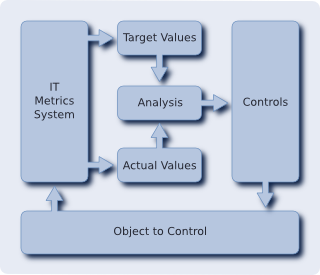IT Metrics
Measuring and Monitoring Your Service Quality

Quality Translated into Numbers
As cost pressure and the level of IT "commoditisation" increase, the global deployment of high-quality IT services confronts many companies with a number of new challenges to deal with. This also applies to the definition of operational service metrics and methods for measuring and monitoring the IT organisation's service quality.
As part of global IT standardisation and benchmarking, IT service metrics and standardised reporting are becoming increasingly important components of IT Service Management. There are two main types of metrics: on the one hand the technical/operational metrics, on the other hand the technology-independent metrics used to rate business processes. Furthermore, your company's compliance with laws, policies and regulations must also be taken into account.
Service Metrics in Practice
Today, end-to-end analyses of transactions are required. Appropriate metrics are necessary to ensure stable performance, optimal use of resources, and business alignment. In heterogeneous, historically grown and distributed IT infrastructures, the mere collection of relevant technical data is often a major challenge for the IT organisation.
Especially in the field of IT sourcing, service quality metrics serve as a basis for Service Level Agreements (SLA). Providing sufficient and understandable information about service quality and the actually rendered service levels is the only way for you to give your client an objective overview of your service portfolio and to ensure that both parties have a common understanding of service delivery.
Service Strategy
- Percentage of IT costs in relation to service and client
- Requested changes in relation to existing services
- Ratio of defined, approved, and utilised services in relation to the service portfolio
- Costs in relation to the entire service lifecycle
- Number of business processes per service
Service Transition
- Number of implemented services in relation to the number of services to be implemented
- Development of incidents regarding service introduction planning and delays in relation to all incidents
- Number of changes per month within the transferred services
- Number of failed changes in relation to the overall number of changes
- Number of emergency changes in relation to the overall number of changes
- Number of incidents per release
- Duration from service request to availability
Service Design
- Capacity/workload of the service infrastructure including historical development (trend analysis)
- Availability of relevant services and CIs
- Response and implementation times of security-relevant changes
- Overfulfilment of CI requirements and capacities
- Effectiveness of measures regarding service failure prevention
Service Operation
- Number of events, incidents, and service requests per service and month
- Time to resolution of events, incidents, and service requests
- Number of defined problems
(problem control/error control) - Number of events, incidents, and service requests in relation to the number of changes per month
- Number of events, incidents, and service requests relsolved using the knowledge base
- Number of solutions stored in the knowledge base
And what can we do for you?
We support you in defining and evaluating quantitative and qualitative metrics, enabling you to implement your IT strategy in an efficient and effective way. Would you like to learn more about our services regarding IT metrics? Please feel free to contact us.
